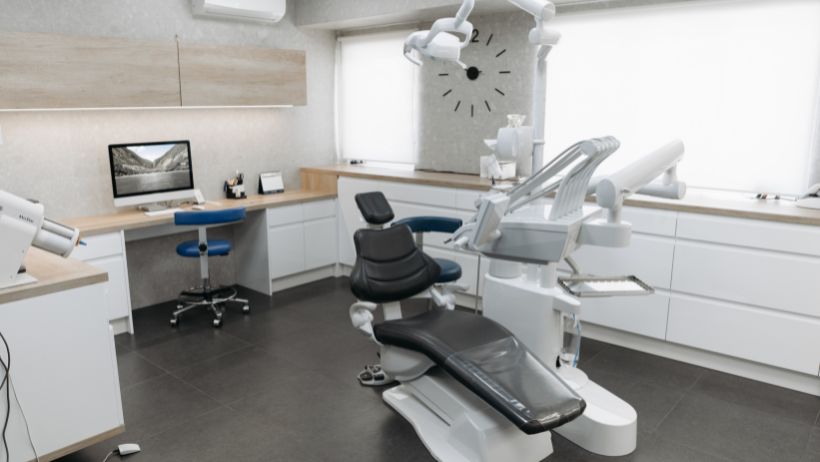
The Ultimate Cleanliness Guide for Dental Clinics: Ensuring Sterility and Patient Safety
In the world of dental care, the importance of maintaining a sterile environment cannot be overstated. With the constant influx of patients and the nature of dental procedures, clinics are potential hotbeds for the spread of infections if proper cleanliness protocols are not followed. This guide, provided by the experts at www.temeculafacialoralsurgery.com, delves into the essential practices for ensuring sterility in dental clinics, guaranteeing both patient safety and the clinic’s reputation.
The Cornerstone of Dental Health: Sterility
Sterility in a dental clinic goes beyond simple cleanliness; it involves a comprehensive approach to prevent the spread of infections and ensure patient safety. The mouth is a gateway for various microorganisms to enter the body, making dental procedures particularly sensitive to sterility issues.
Understanding Cross-Contamination
Cross-contamination in a dental setting can occur through direct contact with bodily fluids, contaminated instruments, or even surfaces within the clinic. This makes it imperative for dental professionals to adopt strict sterilization protocols to prevent the transmission of pathogens.
Fun Fact: Did you know?
The first dental chair was introduced in the 17th century, revolutionizing how dental care was provided. Today, the evolution continues with chairs designed to minimize contamination and improve sterilization processes.
The Blueprint for Sterility: Best Practices
Achieving sterility in a dental clinic requires a multifaceted approach, incorporating the use of advanced sterilization equipment, meticulous cleaning routines, and rigorous staff training, as exemplified on the cleanervibe.com website.
State-of-the-Art Sterilization Equipment
Modern dental clinics rely on autoclaves and other sterilization devices to ensure that all instruments are free from microbes. These machines use high-pressure steam to kill bacteria, viruses, and fungi, ensuring that instruments are safe for use on the next patient.
Selection and Maintenance of Sterilization Equipment
Choosing the right sterilization equipment is crucial. Regular maintenance and monitoring of sterilization cycles are necessary to guarantee that the equipment functions optimally.
Meticulous Cleaning Routines
Every surface in a dental clinic, from the dental chair to the doorknobs, needs regular disinfection. Employing hospital-grade disinfectants and following a rigorous cleaning schedule are key components of maintaining a sterile environment. Websites such as www.adrianacleaning.com could offer valuable services and products to support this endeavor, ensuring thorough sanitation and hygiene practices in medical facilities.
Daily, Weekly, and Monthly Cleaning Schedules
Creating a structured cleaning schedule ensures that no area is overlooked. Daily cleaning of high-touch surfaces, weekly deep cleans, and monthly inspections can help maintain an impeccably clean clinic.
Rigorous Staff Training
Staff training is essential for maintaining sterility in a dental clinic. This includes not only dentists but also dental assistants, hygienists, and even the administrative staff.
Continuous Education and Protocol Updates
The world of infection control is ever-evolving. Continuous education and staying updated with the latest guidelines from health authorities ensure that the clinic’s practices are always at the forefront of patient safety.
Beyond the Clinic: Sterility at Every Step
Ensuring sterility in a dental clinic extends beyond the physical premises. From instrument procurement to waste disposal, every aspect of clinic operations plays a role in maintaining a sterile environment.
Instrument Procurement and Care
Selecting high-quality instruments that are designed for easy sterilization and implementing a strict protocol for their use and care can significantly reduce the risk of contamination.
Waste Disposal Protocols
Proper disposal of medical waste, including sharp objects and biohazard materials, is critical. Implementing color-coded bins and clear guidelines for waste segregation helps prevent accidental exposure and maintains a clean clinic environment.
Patient Education and Engagement
Educating patients about the importance of sterility and how they can contribute to a clean clinic environment is also crucial. Simple actions, like using hand sanitizer upon entering the clinic, can make a significant difference.
Fun Fact: The Power of a Smile
A study found that the simple act of smiling can boost the immune system. In a sterile dental clinic, not only are patients safeguarded against infections, but their smiles can also contribute to their overall health.
Maintaining sterility in a dental clinic is not just about following protocols; it’s about building trust. When patients know that their safety is the clinic’s top priority, they are more likely to return and recommend the clinic to others. In this way, a commitment to cleanliness and sterility becomes the foundation of a successful dental practice. By adhering to the practices outlined in this guide, dental clinics can ensure that they not only meet but exceed the standards for patient care and safety.

Comments are closed.